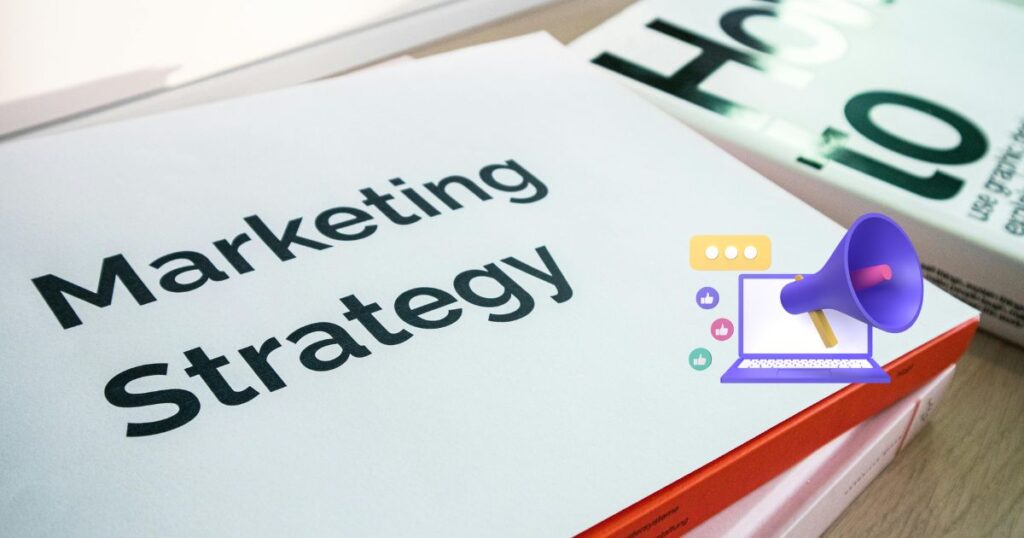Introduction
Let’s face it: in today’s digital whirlwind, “likes” don’t pay the bills. You need marketing tactics that translate into cold, hard revenue. But where do you start? Don’t worry, you’re not alone! Many businesses struggle to cut through the noise and implement strategies that genuinely drive sales. That’s why we’ve distilled the essentials into five practical, actionable tactics guaranteed to boost your bottom line.
Why Marketing Matters (Beyond the Buzzwords)
Marketing isn’t just about pretty visuals and catchy slogans. It’s the engine that fuels your business growth. Effective marketing, when done right, creates a sustainable pipeline of customers, turning potential leads into loyal buyers. Let’s dive into the strategies that will make your revenue soar.

1. Optimize Your Online Presence
Think of your online presence as your 24/7 sales team. It’s the first impression many potential customers have of your brand.
1.1 Enhance Your Website Usability
Imagine walking into a store where you can’t find anything. Frustrating, right? That’s what a clunky website feels like to users. Prioritize a user-friendly design with intuitive navigation and lightning-fast loading speeds. And don’t forget mobile responsiveness – a must-have in today’s smartphone-centric world.
1.2 Invest in Search Engine Optimization (SEO)
Get found! SEO is your secret weapon for driving organic traffic. Understand the basics – keyword research, quality content, and backlinks – to climb those search engine rankings.
1.3 Utilize Social Media Effectively
Don’t be everywhere; be where your audience is. Choose the platforms your target audience frequents and create engaging, shareable content that sparks conversations and builds a community.
2. Leverage Email Marketing
Email marketing isn’t dead; it’s just evolved. It’s a powerful tool for nurturing leads and driving conversions.
2.1 Build and Segment Your Email List
Don’t just collect emails; gather them strategically. Offer valuable lead magnets (think ebooks, checklists, or exclusive discounts) to incentivize sign-ups. Segment your list to deliver personalized messages that resonate.
2.2 Craft Engaging Email Campaigns
Your emails should be more than just sales pitches. Craft compelling subject lines, write engaging content, and include clear calls to action (CTAs). Design visually appealing newsletters and optimize send times for maximum impact.
2.3 Analyze and Improve Campaign Performance:
Track key metrics like open rates, click-through rates, and conversions. Use tools to measure your success and A/B test different elements to continuously improve your campaigns.

3. Implement Content Marketing Strategies: Become the Authority
Content marketing is about providing value, not just selling.
3.1 Identify Your Target Audience
Who are you talking to? Understand their needs, pain points, and preferences. Create detailed buyer personas to guide your content creation.
3.2 Create Valuable Content
Blogs, videos, infographics – the possibilities are endless. Focus on creating content that addresses your audience’s challenges and positions you as a trusted authority. Consistency is key!
3.3 Promote Your Content
Don’t let your content languish. Share it on social media, collaborate with influencers, and repurpose it to maximize its reach.
4. Explore Paid Advertising Options
Paid advertising can be a powerful tool for reaching a wider audience and driving immediate results.
4.1 Understand Different Advertising Platforms
Google Ads, Facebook Ads, LinkedIn Ads and so on – each platform has its strengths. Choose the one that aligns with your business goals and target audience.
4.2 Set a Clear Budget and Goals
Don’t just throw money at ads. Define specific, measurable objectives and set a realistic budget. Monitor your performance and adjust your spending accordingly.
4.3 Monitor and Optimize Ad Performance
Track key performance indicators (KPIs) and analyze your ad data. Refine your campaigns based on insights to maximize your return on investment (ROI).
5. Foster Customer Relationships: Turn Customers into Advocates
Customer loyalty is the ultimate revenue driver.
5.1 Offer Exceptional Customer Service
Responsive, helpful support is crucial. Engage with customers post-purchase and collect feedback to continuously improve your service.
5.2 Implement Loyalty Programs
Reward repeat customers with exclusive perks and discounts. A well-structured loyalty program can significantly boost customer retention.
5.3 Encourage Referrals and Reviews
Word-of-mouth marketing is powerful. Incentivize referrals and encourage customers to leave positive reviews.

Conclusion
These five tactics aren’t just theoretical; they’re proven strategies that can transform your business. Remember, marketing is an ongoing process. Continuously evaluate your efforts, adapt to changing trends, and never stop learning. Implement these strategies and watch your revenue grow!
FAQs
Q: What is the best marketing tactic for small businesses?
A: Small businesses should focus on cost-effective strategies like SEO, content marketing, and email campaigns before scaling into paid advertising.
Q: How can I measure the effectiveness of my marketing strategies?
A: Track key metrics such as website traffic, conversion rates, engagement levels, and ROI from paid campaigns.
Q: What budget should I allocate to marketing efforts?
A: A general rule is to allocate 5-15% of your revenue to marketing, but this can vary depending on your industry and goals.
Q: How often should I update my marketing tactics?
A: Marketing is dynamic. Stay up-to-date with industry trends and adapt your strategies regularly.
Q: Can marketing tactics for online businesses differ from those for brick-and-mortar establishments?
A: Yes, online businesses rely more on digital marketing, while brick-and-mortar stores benefit from local SEO, in-store promotions, and community engagement.